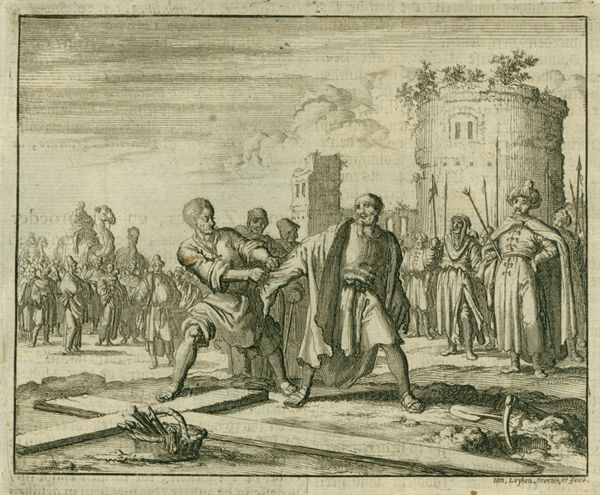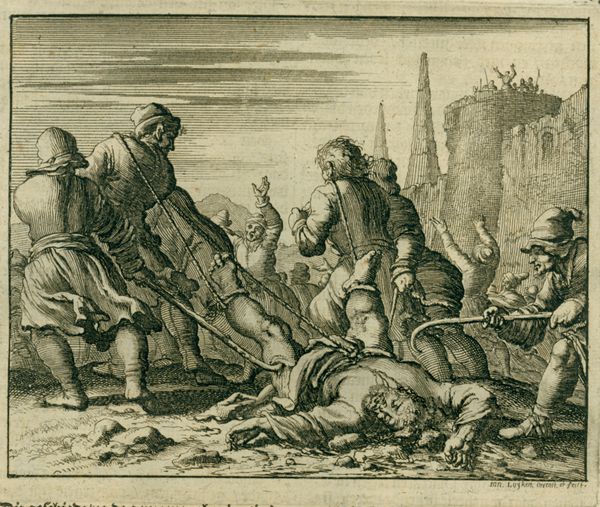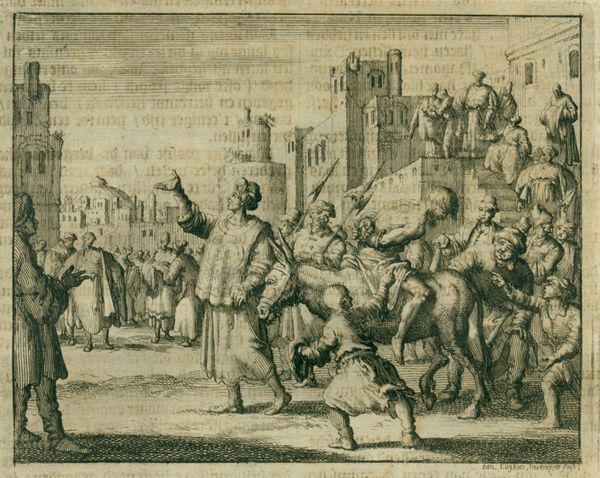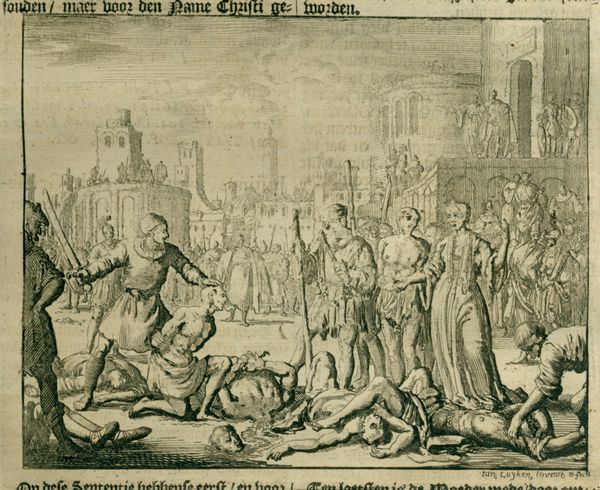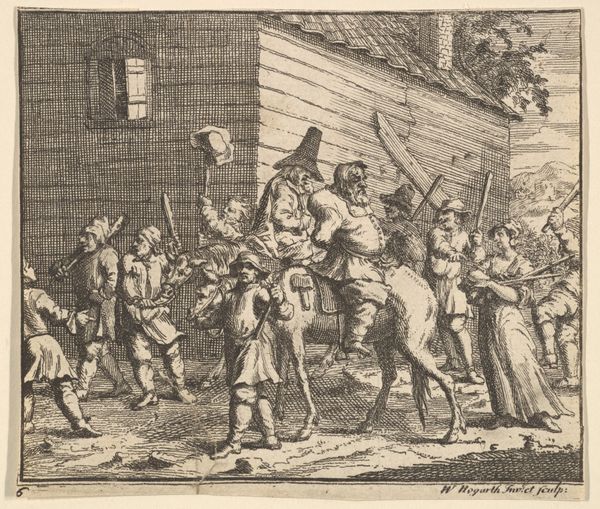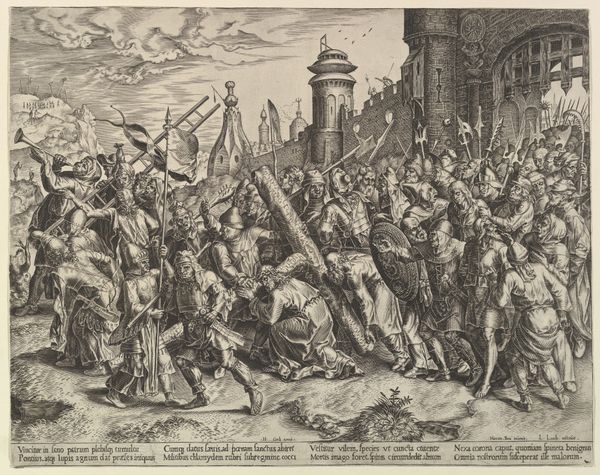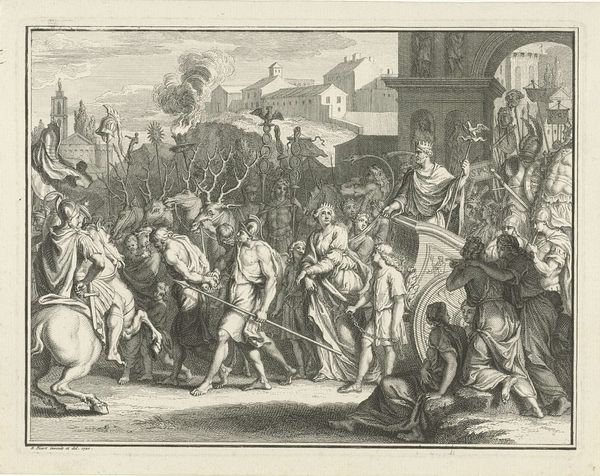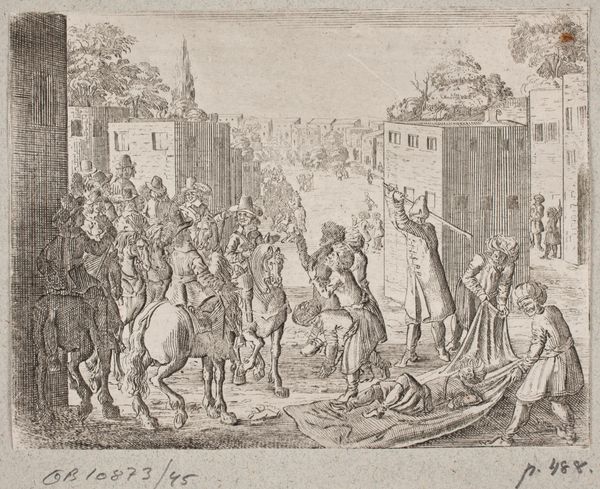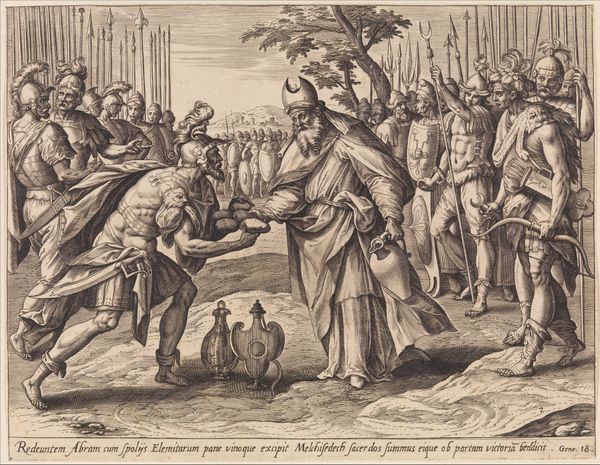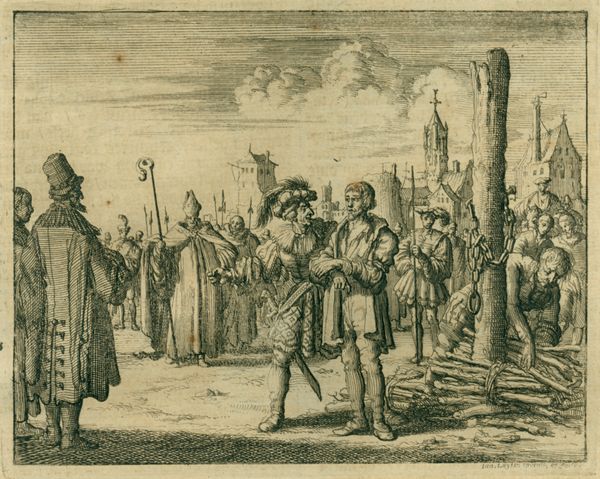
print, engraving
#
narrative-art
#
baroque
# print
#
figuration
#
line
#
history-painting
#
engraving
Copyright: Public domain
Curator: Jan Luyken created this dramatic engraving, titled "Stoning of Stephen, AD 34," in 1685. Editor: My immediate reaction is one of chaos. The scene feels claustrophobic, dominated by a mob seemingly driven by fury. What grabs you formally about it? Curator: The composition itself is incredibly dynamic. Luyken uses tightly packed figures and strong diagonals to create a sense of intense, almost frantic energy. Look how the lines converge on Stephen, highlighting his suffering. Note also the linear precision typical of baroque prints. Editor: Precisely, but who were the intended viewers, and how does this imagery function within a religious and social framework? Curator: This piece exemplifies the genre of narrative art, popular for its ability to convey moral or religious lessons through accessible imagery. Prints like this were widely disseminated. They brought biblical scenes, typically reserved for wealthier patrons and painted on large canvases, to a wider audience, playing a role in moral instruction. Editor: Absolutely. It highlights a shift in access and distribution of what would now be visual information. But beyond this context, note Stephen's submissive pose contrasting with the crowd's brutality. It almost justifies their behavior or frames it within some preordained religious expectation, in effect validating the violence. The architecture, on the other hand, suggests both confinement and the social hierarchy implicit in its heavy stone features. Curator: From a formal viewpoint, the use of light and shadow in creating depth, it heightens the drama and directs our eye to the emotional core of the scene, which can only but support Stephen's moment of suffering. Consider how the foreground is richly detailed in linear fashion, contrasted to the background to direct focus onto this most brutal of figurative subjects. Editor: A compelling rendering overall and clearly made for mass consumption! These early engravings provided a powerful means of visualizing biblical narratives and reinforcing religious values across a wide demographic. Curator: Agreed. The dynamic design and expert lines underscore how printmakers use compositional structure for religious interpretation during this Baroque age.
Comments
No comments
Be the first to comment and join the conversation on the ultimate creative platform.
